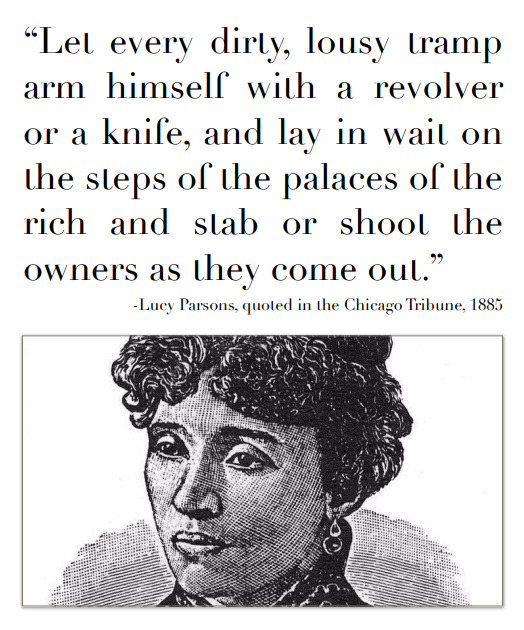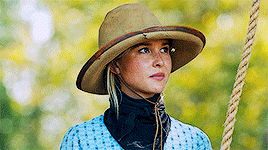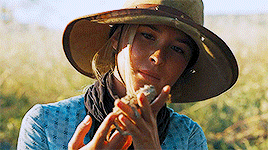#(1883)
Explore tagged Tumblr posts
Text

Etienne-Jules Mare: Vol de Héron (1883)
12K notes
·
View notes
Text

Did You Ever Kill Anybody Father? (1883) by Frank Holl
493 notes
·
View notes
Text

"Let every dirty, lousy tramp arm himself with a revolver or a knife, and lay in wait on the steps of the palaces of the rich and stab or shoot the owners as they come out. Let us kill them without mercy, and let it be a war of extermination." - Lucy Parsons
#inspirational quotes#lucy parsons#anarchism#anarchy#usa#1883#direct action#anti-capitalism#propaganda of the deed#quote#assassination#socialism#iww#class war#working class
666 notes
·
View notes
Text

~ Never: a Hand-book for the Uninitiated and Inexperienced Aspirants to Refined Society’s Giddy Heights and Glittering Attainments; Nathan D. Urner, 1883
232 notes
·
View notes
Text

Dolman
Emile Pingat
Paris, France
c.1883-1890
Museum of Fine Arts, Boston
#dolman#fashion history#historical fashion#1880s#emile pingat#france#belle epoque#1883#1885#1889#19th century#outerwear#brown#silk#velvet#bustle era#mfa boston#i love 1880s dolmans#they're so ugly and extra and i love it
486 notes
·
View notes
Text

Bee's antenna change positions during pollen gathering. The Fairy-Land of Science. 1883.
Science History Institute
497 notes
·
View notes
Text

La danse à Bougival (The Dance at Bougival), 1883
By Pierre-Auguste Renoir
#reddit#pierre auguste renoir#museum#aethelwulf888#la danse a bougival#the dance at bougival#1883#art#artist#painting#painter#dancing#1880s#1800s#dance#dancer
182 notes
·
View notes
Text



Auguste Rodin
Fallen caryatid carrying an urn
1883
301 notes
·
View notes
Text

The Ides of March
1883
Edward Poynter
#dark academia#light academia#classical#academia aesthetic#escapism#academia#books and libraries#classic literature#books#architecture#art#painting#The Ides of March#artist#painter#Edward Poynter#1800s#19th century#1883#royal core#cottage core#aesthetic#academic#mood#artistic#vibe#tumblr
427 notes
·
View notes
Text

La Mode illustrée, no. 49, 9 décembre 1883, Paris. Toilettes de Mme Coussinet, rue Richer, 43. Collection of the Rijksmuseum, Netherlands
Robe en moscovite gris acier, velours ciselé et soie brochée de même couleur. La jupe courte en moscovite uni, disposée en gros plis tuyaux, est garnie de quatre plis. Une écharpe en soie brochée est drapée sur le devant de la jupe et reparaît pour former le pouf par derrière. Très grand gilet Louis XV, en velours ciselé, avec jaquette Louis XV, faite en muscovite unie. Cette jaquette est largement ouverte sur le gilet. Sur le bord inférieur de celui-ci se trouve une fente dans laquelle passe l'écharpe, pour former des paniers sur les hanches et pouf derrière.
Dress in steel gray Muscovite, chiseled velvet and brocaded silk of the same color. The short skirt in plain Muscovite, arranged in large pipe pleats, is trimmed with four pleats. A brocaded silk scarf is draped over the front of the skirt and reappears to form the pouf at the back. Very large Louis XV waistcoat, in chiseled velvet, with Louis XV jacket, made of plain Muscovite. This jacket is widely open on the waistcoat. On the lower edge of the latter is a slit through which the scarf passes, to form baskets on the hips and pouf behind.
—
Toilette de jeune femme. En satin merveilleux bleu pâle uni. Jupe ronde, garnie devant en tablier de quatre larges bandes de velours grenat. Tunique à paniers sous laquelle tombe de chaque côté un panneau plat entouré d'une broderie représentant des roses nuancées depuis le rose pâle jusqu'au grenat. Le corsage, fait en forme de guimpe, boutonné derrière, montant, est froncé à l'encolure. Collier de velours grenat, noué sur le côté, relevant une ruche de dentelle blanche. A l'extrémité des manches, bracelets de même velours, avec nœud pareil.
Young woman's ensemble. In plain pale blue marvelous satin. Round skirt, trimmed in front in an apron with four wide bands of garnet velvet. Tunic with paniers under which falls on each side a flat panel surrounded by embroidery representing roses shaded from pale pink to garnet. The bodice, made in the shape of a wimple, buttoned behind, rising, is gathered at the neckline. Garnet velvet necklace, tied on the side, raising a ruffle of white lace. At the end of the sleeves, bracelets of the same velvet, with a similar bow.
#La Mode illustrée#19th century#1880s#1883#on this day#December 9#periodical#fashion#fashion plate#color#description#rijksmuseum#dress#bustle#flowers#Modèles de chez#Madame Coussinet
157 notes
·
View notes
Photo










I always thought of mothers like nervous chickens, too worried about their clutch to ever hunt for a worm. In my mind, my mother was a banker, hoarding my freedom like money. I never once thought of her as a woman with desires and dreams and passion, though passion is the thing that made me. I lie awake at night and my dreams for this life burn inside me as if I'd walked to the campfire and tried to eat it. I watched my mother and I felt foolish for thinking the notion of eating fire was mine alone. It was hers first. Then she gave it to me. I watched her ride and I didn't see my mother. I saw a woman. And the woman was magnificent.
#1883#elsa dutton#1883edit#elsaduttonedit#perioddramaedit#perioddramasource#perioddramagif#perioddramacentral#mygifs#mygifsets#myedits
69 notes
·
View notes
Text



ISABEL MAY as ELSA DUTTON 1883 — 1.01 "1883"
#1883#elsa dutton#ours#by bri#1883edit#elsaduttonedit#isabel may#tvedit#tureign#usereerie#usersole#userserins#userpsyche#usernowz#cinematv#dailyflicks#femalegifsource#dailytvfilmgifs
65 notes
·
View notes
Photo

Etowah Mounds
Etowah Mounds (also known as Etowah Indian Mounds) is a National Historic Landmark and archaeological site near Cartersville, Georgia, USA, enclosing the ruins of a prehistoric Native American city whose original name is unknown. The present designation of Etowah means "town" in the language of the Muscogee-Creek Native Americans.
The city was built in three phases between c. 1000 - c. 1550 and the present site encloses three large and three smaller mounds surrounding a central plaza. The three large mounds were the chief’s residence (Mound A), the ceremonial site for religious rituals (Mound B), and the burial site for the nobility (Mound C); the smaller mounds are each attached or nearby the larger. Between the three was a plaza, which served for ceremonies, commerce, and as a ball field.
The city was built and flourished during the period known as the Mississippian culture (c. 1100-1540 CE) when many of the best-known mound sites in North America – such as Cahokia and Moundville – were also constructed. The city seems to have developed from a small village community of the Woodland Period (c. 500 BCE - 1100 CE) whose inhabitants were related to those who built Etowah and the later Creek and Muskogee Native American tribes of the region who lived in and near the site.
The Cherokee Nation arrived in the region from the north in the 15th century CE and settled at Etowah, but they, like many others in the area, had their numbers depleted by European diseases they had no immunity to. The Creek and Cherokee remained on the land, however, until gold was discovered in the region and they were forcibly removed to Oklahoma by order of President Andrew Jackson (served 1829-1837) in the 1830s, a tragic loss of land and heritage to the First Nations through the forced migration that has come to be known as the Trail of Tears.
The mounds were first noted by Americans in 1817 and test-sited in 1883 but no major excavations were begun until 1925 when the famous (or infamous) archaeologist Warren K. Moorehead (l. 1866-1939) arrived at the site. Moorehead’s work on Mound C – the most completely excavated area of the site to date – unearthed a number of significant artifacts which enabled the dating of the site to the Mississippian culture period. Excavations since Moorehead’s have been sporadic, but it is believed, based on what has been found and the general preservation of the site, that Etowah is the most intact of the Mississippian culture mound sites of the southeast built by the ancestors of the Muscogee-Creek Nation.
The Mound Builders & Mississippian Culture
The Mississippian culture is often cited as though it were the beginning of monumental mound-building, but mounds were built thousands of years before in North America. Watson Brake Mounds dates to c. 3500 BCE and Poverty Point to c. 1700-1100 BCE, with the Mississippian culture’s mounds following. The Mississippian culture has become the best known and most closely associated with mound-building, however, owing to the proliferation of mounds prior to that period and the skill of the people of the Adena culture (c. 800 BCE - 1 CE) and the Hopewell culture (c. 100 BCE-500 CE) who perfected mound-building and provided the model for later works such as the famous Mississippian Cahokia Mounds and Moundville.
Many mounds were constructed during the Archaic Period (c. 8000-1000 BCE) and the Woodland Period (c. 500 BCE - 1100 CE), but these differed from the later Mississippian culture sites, such as Etowah, in that those of the Adena were conical while those of the Hopewell were either effigy or flat-topped mounds. The Mississippian culture borrowed from both traditions in the creation of their mounds which were influenced, at least in part, by the religious beliefs spread throughout the region by the Hopewell culture.
Continue reading...
100 notes
·
View notes
Text

~ The American Pictorial Home Book, or Housekeeper’s Encyclopedia, by Mrs. Harriet Almaria Baker Suddoth, 1883
#1883#1800s#vintage advice#warm beds#getting up and going to work in winter can literally kill you#excuses not to get up in the morning#the death of multitudes
422 notes
·
View notes
Text

submitted by @edwardian-girl-next-door 💙🩵
#historical fashion poll submission#historical fashion polls#fashion poll#historical dress#historical fashion#dress history#fashion history#fashion plate#19th century#19th century fashion#19th century dress#late 19th century#1880s fashion#1880s dress#circa 1880#1880s#circa 1883#1883#skirt
114 notes
·
View notes
Text

Hand position for calligraphy. The universal self-instructor. 1883.
Internet Archive
1K notes
·
View notes